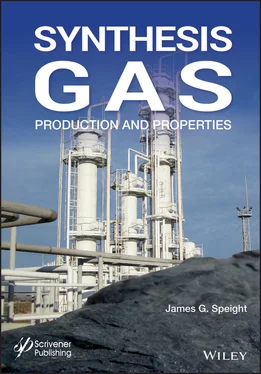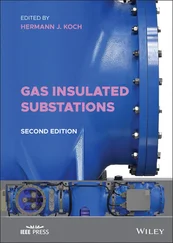There is also the need for a refinery to be configured to accommodate opportunity crude oils and/or high acid crude oils which, for many purposes are often included with heavy feedstocks (Speight, 2014a, 2014b; Yeung, 2014). Opportunity crude oils are either new crude oils with unknown or poorly understood properties relating to processing issues or are existing crude oils with well-known properties and processing concerns (Ohmes, 2014). Opportunity crude oils are often, but not always, heavy crude oils but in either case are more difficult to process due to high levels of solids (and other contaminants) produced with the oil, high levels of acidity, and high viscosity. These crude oils may also be incompatible with other oils in the refinery feedstock blend and cause excessive equipment fouling when processed either in a blend or separately (Speight, 2015b). There is also the need for a refinery to be configured to accommodate opportunity crude oils and/or high acid crude oils which, for many purposes are often included with heavy feedstocks.
Opportunity crude oils, while offering initial pricing advantages, may have composition problems which can cause severe problems at the refinery, harming infrastructure, yield, and profitability. Before refining, there is the need for comprehensive evaluations of opportunity crudes, giving the potential buyer and seller the needed data to make informed decisions regarding fair pricing and the suitability of a particular opportunity crude oil for a refinery. This will assist the refiner to manage the ever-changing crude oil quality input to a refinery – including quality and quantity requirements and situations, crude oil variations, contractual specifications, and risks associated with such opportunity crudes.
High-acid crude oils are crude oils that contain considerable proportions of naphthenic acids which, as commonly used in the crude oil industry, refers collectively to all of the organic acids present in the crude oil (Shalaby, 2005; Speight, 2014b). In many instances, the high-acid crude oils are actually the heavier crude oils (Speight, 2014a, 2014b). The total acid matrix is therefore complex and it is unlikely that a simple titration, such as the traditional methods for measurement of the total acid number, can give meaningful results to use in predictions of problems. An alternative way of defining the relative organic acid fraction of crude oils is therefore a real need in the oil industry, both upstream and downstream.
High acid crude oils cause corrosion in the refinery – corrosion is predominant at temperatures in excess of 180 oC (355 oF) (Kane and Cayard, 2002; Ghoshal and Sainik, 2013; Speight, 2014c) – and occurs particularly in the atmospheric distillation unit (the first point of entry of the high-acid crude oil) and also in the vacuum distillation units. In addition, overhead corrosion is caused by the mineral salts, magnesium, calcium and sodium chloride which are hydrolyzed to produce volatile hydrochloric acid, causing a highly corrosive condition in the overhead exchangers. Therefore, these salts present a significant contamination in opportunity crude oils. Other contaminants in opportunity crude oils which are shown to accelerate the hydrolysis reactions are inorganic clay minerals and organic acids.
Foamy oil is oil-continuous foam that contains dispersed gas bubbles produced at the well head from heavy crude oil reservoirs under solution gas drive (Maini, 1999; Sheng et al. , 1999; Maini, 2001). The nature of the gas dispersions in oil distinguishes foamy oil behavior from conventional heavy crude oil. The gas that comes out of solution in the reservoir does not coalesce into large gas bubbles nor into a continuous flowing gas phase. Instead it remains as small bubbles entrained in the crude oil, keeping the effective oil viscosity low while providing expansive energy that helps drive the oil toward the producing. Foamy oil accounts for unusually high production in heavy crude oil reservoirs under solutiongas drive.
During primary production of heavy crude oil from solution gas drive reservoirs, the oil is pushed into the production wells by energy supplied by the dissolved gas. As fluid is withdrawn from the production wells, the pressure in the reservoir declines and the gas that was dissolved in the oil at high pressure starts to come out of solution ( foamy oil ). As pressure declines further with continued removal of fluids from the production wells, more gas is released from solution and the gas already released expands in volume. The expanding gas, which at this point is in the form of isolated bubbles, pushes the oil out of the pores and provides energy for the flow of oil into the production well. This process is very efficient until the isolated gas bubbles link up and the gas itself starts flowing into the production well. Once the gas flow starts, the oil has to compete with the gas for available flow energy. Thus, in some heavy crude oil reservoirs, due to the properties of the oil and the sand and also due to the production methods, the released gas forms foam with the oil and remains subdivided in the form of dispersed bubbles much longer.
Heavy crude oil is a type of crude oil that is different from conventional crude oil insofar as it is much more difficult to recover from the subsurface reservoir. Heavy crude oil, particularly heavy crude oil formed by biodegradation of organic deposits, is found in shallow reservoirs, formed by unconsolidated sands. This characteristic, which causes difficulties during well drilling and completion operations, may become a production advantage due to higher permeability. In simple terms, heavy crude oil is a type of crude oil which is very viscous and does not flow easily. The common characteristic properties (relative to conventional crude oil) are high specific gravity, low hydrogen to carbon ratios, high carbon residues, and high contents of asphaltenes, heavy metal, sulfur and nitrogen. Specialized refining processes are required to produce more useful fractions, such as: naphtha, kerosene, and gas oil.
1.2.3 Extra Heavy Crude Oil and Tar Sand Bitumen
In addition to conventional crude oil and heavy crude oil, there remains an even more viscous material that offers some relief to the potential shortfalls in supply (Meyer and De Witt, 1990; Meyer and Attanasi, 2003; Speight, 2014; BP, 2019). This is the bitumen known as extra heavy crude oil and the bitumen found in tar sand ( oil sand ) deposits (Table 1.1). However, many of these reserves are only available with some difficulty and optional refinery scenarios will be necessary for conversion of these materials to liquid products (Speight, 2000, 2014a) because of the substantial differences in character between conventional crude oil and tar sand bitumen (Speight, 2014a).
Table 1.1Simplified differentiation between conventional crude oil, tight oil, heavy crude oil, extra heavy crude oil, and tar sand bitumen *.
| Conventional Crude Oil |
| Mobile in the reservoir; API gravity: >25 o |
| High-permeability reservoir |
| Primary recovery |
| Secondary recovery |
| Tight Oil |
| Similar properties to the properties of conventional crude oil; API gravity: >25 o |
| Immobile in the reservoir |
| Low-permeability reservoir |
| Horizontal drilling into reservoir |
| Fracturing (typically multi-fracturing) to release fluids/gases |
| Heavy Crude Oil |
| More viscous than conventional crude oil; API gravity: 10-20 o |
| Mobile in the reservoir |
| High-permeability reservoir |
| Secondary recovery |
| Tertiary recovery (enhanced oil recovery – EOR; e.g. steam stimulation) |
| Extra Heavy Crude Oil |
| Similar properties to the properties of tar sand bitumen; API gravity: <10 o |
| Mobile in the reservoir |
| High-permeability reservoir |
| Secondary recovery |
| Tertiary recovery (enhanced oil recovery – EOR; e.g. steam stimulation) |
| Tar Sand Bitumen |
| Immobile in the deposit; API gravity: <10 o |
| High-permeability reservoir |
| Mining (often preceded by explosive fracturing) |
| Steam assisted gravity draining (SAGD) |
| Solvent methods (VAPEX) |
| Extreme heating methods |
| Innovative methods ** |
*This list is not intended for use as a means of classification.
Читать дальше












